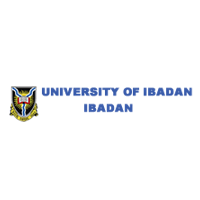Below is a summary of the abstract you submitted. Presenting author(s) is shown in bold.
If any changes need to be made, you can modify the abstract or change the authors.
You can also download a .docx version of this abstract.
If there are any problems, please email Dan at dar78@pitt.edu and he'll take care of them!
This abstract was last modified on March 16, 2023 at 10:14 a.m..

Gordonia bacteriophage Salvador belongs to cluster DC, sub-cluster DC1, which is made up of 27 members with average genome length of 58,911 base pairs and an average G+C content of 67.8% (https://phagesdb.org/subclusters/DC1/). Salvador was originally donated by Victoria Przybos and Calista Walk of the University of Pittsburg team in 2021. The phage was grown on Gordonia terrae 3612 isolation host and sequencing information shows approximate shotgun coverage of 804X. It has circularly permuted ends, a G+C content of 67.8% (https://phagesdb.org/phages/Salvador/). Like other members of the sub-cluster DC1, Salvador exhibits a lytic cycle, evidenced by the presence of lytic proteins Lysin A and B. NCBI-BLASTn (https://blast.ncbi.nlm.nih.gov/Blast.cgi) whole-genome sequence alignment revealed considerable nucleotide similarities between Salvador and other sub-cluster DC1 members, with the closest relative being phage Smokingbunny. Other notable similar genomes include Fireball, Arri and Evamon. Genome structural organization through Phamerator revealed very close gene synteny amongst the sub-cluster DC1 members. Auto-annotation carried out using Glimmer and GeneMark predictors on DNA Master predicted 94 protein-coding features, which were also confirmed by auto-annotation created on RAST server (https://rast.nmpdr.org/). Manual inspection and start site refinement were carried out using conserved start site predictions from Starterator index (http://phages.wustl.edu/starterator/), gene synteny on Phamerator, and six-frame translation inspection on DNA Master and Artemis. Phylogenetic nucleotide identity of cluster was generated using the Orthologous Average Nucleotide Identity Tool. About 83% of the predicted protein-coding features are forward transcribed genes, leaving the reverse oriented genes with 17% protein-coding features which include HNH-Endonuclease, Helix-Turn-Helix DNA binding domain protein, Immunity repressor protein, Tyrosine integrase. Putative functional assignment carried out on NCBI BLASTp and HHPred successfully assigned putative functions to 38% of the predicted gene features. Some of the predicted protein functions include Helix-turn Helix DNA Binding protein, HNH Endonuclease, Terminase family protein, ASC-1 transcription coactivator, Polynucleotide Kinase, Capsid morphogenesis protein, Capsid maturation protease, RNA Ligase, Portal protein, and Tape Measure protein, Tail assembly chaperone.

